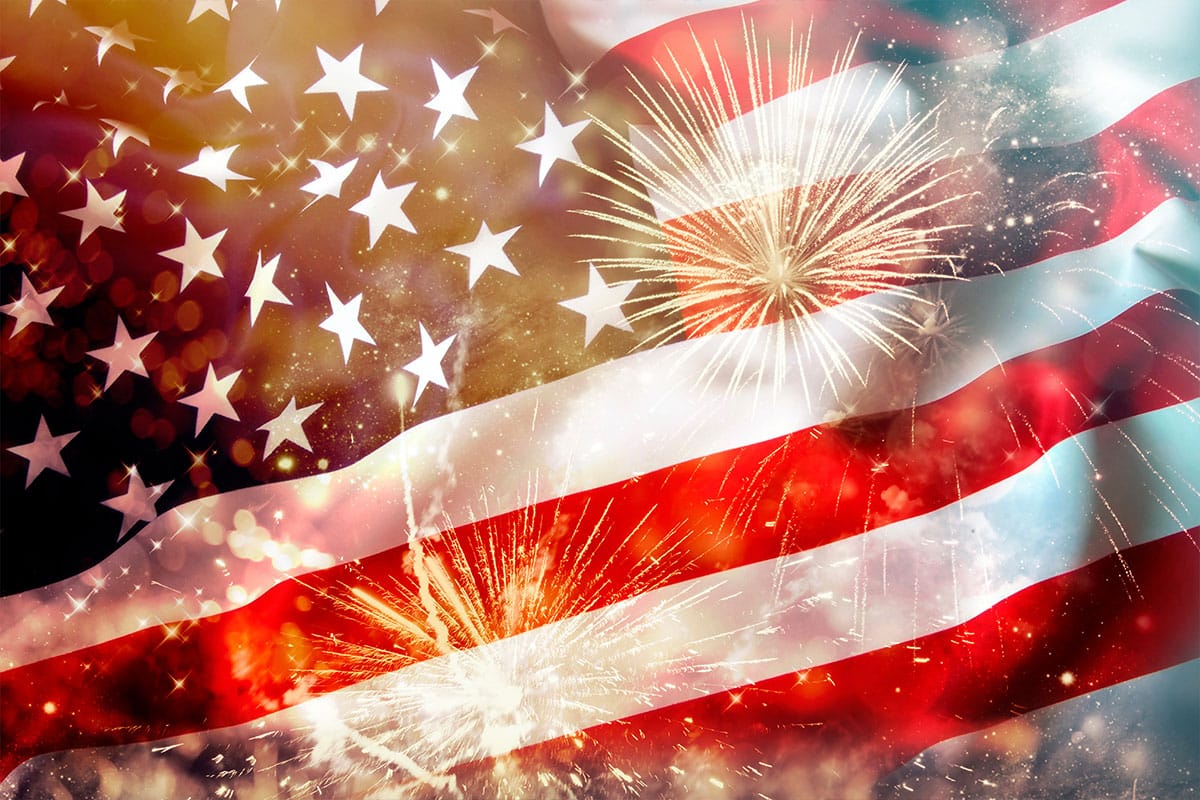Fourth of July Patents

Many patented inventions take our fourth of july celebrations to the next level. Here are some of the notable patented inventions.
1. The charcoal Briquette
It’s not July 4 until someone starts up the grill in the backyard. There are many alternatives to fuel used in grills, but nothing gives your food the unique flavour a charcoal briquette gives food. Ellsworth B. A Zwoyer invented and patented the modern charcoal briquette in 1897. His charcoal briquette introduced the first its kind fuel alternative.
In times of scarce fuels, automobiles have been converted to burn briquettes for propulsion. Ellsworth was not quick on his toes, so his invention was quickly overtaken by charcoal briquettes created by Henry Ford.
2. Plug N Light Musical Firework apparatus
Wouldn’t it be nice to have musically choreographed fireworks this Fourth of July? What if we told you it was entirely possible? The technique involves using timed fireworks to correspond with music beats. Of course, this kind of firework setup is dangerous and risky. It should only be attempted by a professional.
The patent for plug-and-light musical fireworks is registered to the sole inventor Donald Martin Johnson.
3. The Weber Grill
The Weber charcoal grill was invented by George Stephen Sr., who discovered the design while working at Weber Brothers Metal Works as a welder. His primary function at the company was to weld two spheres together, creating marine buoys.
4. The Sparkler
Independence Day celebrations last into the night, which is when the sparkler takes centre stage. The patent for the sparkler was filed on August 15, 1934, over 80 years ago. There are many more patents that address the sparkler, but nothing beats the good old original sparkler. The night is not over until the sparklers are turned on.
5. Blender
July 4 wouldn’t be a party without a wide assortment of drinks available to revellers. Blenders are used to make all kinds of drinks, from spicy margaritas to ice drinks. Thanks to the vita-mix blender, you can grab a cup of your poison, sit back and enjoy a cool drink in the often-blistering summer heat.
The Vita-Mix blender was patented in February of 1968 by Barnard JR. William Barnard JR. started his small appliance company in 1921 (over a hundred years ago) with headquarters in Olmsted, Ohio. The company sells its blenders to over 130 countries all over the world. Thanks to strict regulatory laws in the manufacturing industry, you can expect your vita-mix blender to last you a few years and a few dozen margaritas.
6. Portable Grill
It’s all fun and games until you need to move a super-hot grill from one spot to another. Attempting to move a hot grill can result in severe burns and other injuries. On the other hand, a stationary grill is no fun. Everyone wants a grill that goes where the party goes. The patent for a portable grill was filed on December/12/ 1972.
7. Sunscreen
Dermatologists have repeatedly emphasized the importance of wearing a protective skin barrier in the form of sunscreen. July 4 is usually a hot summer day every other year, so sunscreen is a must-have if you plan on celebrating outside. The earliest forms of sunscreen were plant extracts gotten from rice, jasmine and sometimes lupine plants.
One of the first patents in the sunscreen industry was created by Benjamin Green in 1944. The Florida-based pharmacist patented Red Vet Pet and designed the reddish jelly-like substance for army men. He created sunscreen to protect soldiers from the rays of the sun that could easily leave them sunburned, specifically during World War II.
8. The fireworks combustion chamber
Fireworks required a considerable build-up of pressure to get launched high up in the sky for everyone to see. Each firework has a combustion chamber filled with black powder waiting for the smallest spark to get things going. Black powder is usually made from potassium nitrate, charcoal and sulphur. These elements react to create a thick layer of smoke. An inventor recently acquired a patent for his new combustion chamber, which does not release any smoke during combustion.
9. The Super Soaker
Lonnie G Johnson is a toy maker by trade and a nuclear engineer by profession. He gets inspiration for his creations from tinkering around with different home appliances when he’s not at work. The genius toymaker invented the Super soaker after observing a water pipe shoot water across the room. He would later patent the water gun in 1982.
Thanks to his invention, everyone can grab a water gun and have a merry time watering each other down. Although it took Lonnie Johnson seven years to bring his toy gun invention to the market, it was an instant hit and generated over $1billion in sales.
10. A precision fireworks display system
Walt Disney worked tirelessly to develop patent No.5, 339, 741 (Precision Fireworks Display System with a Decreased Environmental impact). The company finally received their hard-earned patent on August 23, 1994. Their patent gives them rights to any projectiles, such as fireworks which explode mid-air, creating a pyrotechnic display. So far, the company has produced fireworks that display the outline of Mickey Mouse’s round face and two huge ears. This is the same technique people use to write messages across the sky. You can have the words happy birthday or will you marry me written across the sky to give the grand gesture.
11. The invention of fireworks.
Fireworks weren’t invented yesterday. They have been around for centuries since their invention in China over 2000 years ago. The first firework-related patent was given on March 23, 1893, for a Fire torch design. The invention improved flame production by reducing smoke emissions. A few months later, another patent was issued to Albert Lutz for his toy creation which he named Toy Fireworks. He wanted children to enjoy fireworks without facing the risk of burning from the flame. The firework would still display pyrotechnic effects. The Toy Firework patent is U.S Patent No. 638,416.
The Bottom line
Inventions have been around for centuries solving problems and improving your July 4 celebrations. Inventors in the past had a hard time making money from their patents, but that is no longer the case. With advancements in technology, inventors can keep track of their patent income and press legal charges against anyone stealing their ideas.
Famous June Inventions and Patents from History

There have been many inventions throughout history that you will have heard of because of their success. Unfortunately, however, many inventions sink without trace. This is generally because of one or more of the following reasons:
They don’t effectively or economically address the problem they were designed to solve.
The inventor saw a problem that didn’t exist or was already solved effectively in another way.
The patent described something that proved impossible to manufacture.
Of course, you can still learn a great deal from inventions that proved unsuccessful. Here are a few examples of June inventions from history, what made them work, what didn’t and how their inventors dealt with their success or failure.
June 1st, 1869—Thomas Edison Obtains a Patent for an Electrographic Vote Recorder
You’ve almost certainly heard of Thomas Edison, but were you aware that his first patent, registered when he was just 22 years old, was a failure? In early 1869, it was widely reported that the New York state legislature and the city council of Washington, D.C. were both looking for a method of automatically recording their votes. Responding to this, the young inventor proposed a solution.
Each voter would have a switch that could be moved to “Yes” or “No” positions, transmitting a signal to a device with a dial that would mark up the total of Yes and No votes. It would also mark their name in a corresponding column, upon which a chemically treated piece of paper would be placed to record the final results.
An investor named Dewitt Roberts invested $100 in the device and presented it on Capitol Hill. Unfortunately, members didn’t believe that it would save enough time to be helpful, and it was never used. However, it is also likely that they never wanted to save time in the first place; without voicing their votes, there would be no opportunity to speak further and produce a filibuster or persuade their colleagues of their position. In this case, the perceived problem didn’t require a solution. Perhaps the young Edison could have researched further and realized this. However, he didn’t let this failure deter him and went on to register over a thousand more patents during his prolific career.
June 5th, 1869—Ives McGaffey Patents a Carpet Sweeping Machine
Chicago inventor Ives McGaffey spent several years developing his invention, the first real ancestor of the modern vacuum cleaner. He realized that the modern housewife didn’t want to spend hours sweeping rugs and created a machine that created suction with a hand crank. Unfortunately, little is known of the man beside his invention, and it wasn’t a massive success. Although the device was lightweight and compact, the cranking mechanism wasn’t easy to use, and the $25 price tag was out of reach of most customers.
In this instance, the inventor had seen a real need and provided a solution. However, the solution wasn’t economically viable and didn’t solve the problem as well as later inventions. However, it did pave the way for later machines utilizing the newly invented electric motor, and Ives McGaffey is seen by many as the father of the modern vacuum cleaner.
June 9th, 1953—Patent Granted to John H Kraft for the “Manufacture of Soft Surface Cured Cheese”
John H Kraft was one of the founders of Kraft Foods, a brand still globally recognized in the food industry. The Kraft family were (and still are) experts in coming up with new food products designed to be easy to prepare and eat. This invention was one of their earliest and addressed a problem that many would not have even recognized as such.
Most soft cheeses have an outer rind that can be difficult to remove and is somewhat unpalatable. Kraft’s new method produced a soft cheese with a mold pad that was relatively thin and could be easily removed via a porous fabric between the pad and the soft interior cheese. As with many of Kraft’s patents, this invention proved to be a success.
If you’re looking for inspiration as an inventor, this one is food for thought. The most commercially viable inventions are often not flashy technical masterpieces but rather explorations of basic consumer needs that have not yet been met or even consciously considered.
June 10th, 1902—Patent for the “Window Envelope” Granted to H.F. Callahan
Few inventions have become as ubiquitous as the window envelope, used in most businesses across the world to this day. Unfortunately, little is known of the inventor, H.F. Callahan, other than that he submitted the patent and went on to lease the invention to the Envelope Company of Springfield, MA, and continued to profit from it until he died in 1923.
The problem he solved with this invention would not have been immediately apparent to everyone. Businesses at the time were sending out ever-increasing amounts of mail and, in some cases, had to employ people just to write addresses on the envelopes. Another problem was that the letters would occasionally have the wrong address written on them as, once the letter was in the envelope, it was very easy to mix them up.
Callahan’s patent described a rice-paper window in a standard manila envelope (the adhesive worked best on this material), displaying the address inscribed at the top of a correctly folded letter. Thin plastic later replaced the rice paper, but the invention itself is otherwise unchanged today.








